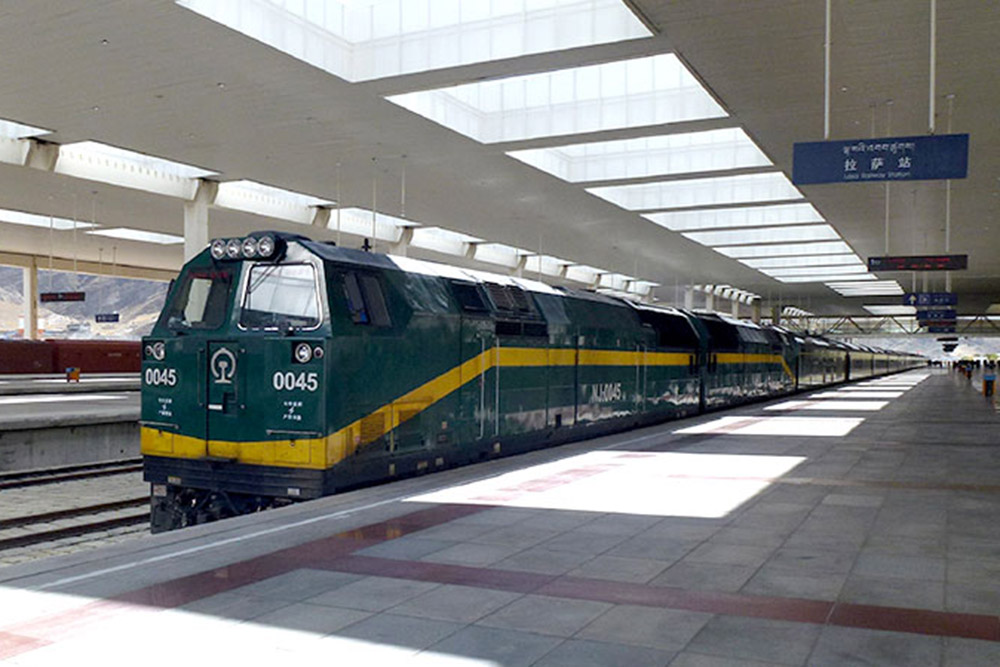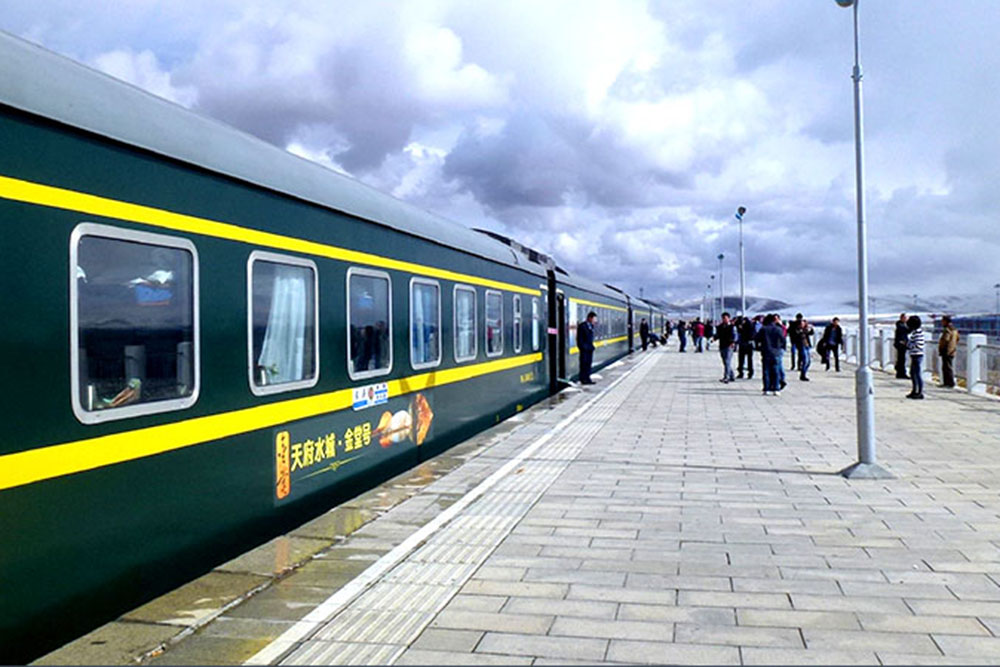Chemin de fer de Qinghai-Tibet, Chine
11 févr. 20
Les Hommes et les Machines Ont Lutté sur un Terrain Inhospitalier et Sous des Températures Glaciales pour Construire Cette Ligne Ferroviaire
Construire une ligne de chemin de fer de 1118 km sur ce qui pourrait facilement être le sommet du monde est une tâche pleine de défis ahurissants.
L'un des projets-clés du dixième plan quinquennal de la Chine (2001 - 2005), la liaison ferroviaire Qinghai-Tibet, devait avoir une immense signification politique, militaire et économique pour la République populaire.
Il y a plus de 50 ans, les politiciens chinois comme Mao Ze Dong et Chou En Lai avaient déjà préconisé la construction d'une ligne de chemin de fer reliant les régions de l'extrême ouest de la Chine au gouvernement central à Pékin.
Le premier segment de 846 km de long entre Xining et Golmud a été lancé en 1959 et terminé en 1979. Assailli par des problèmes concernant la condition physique des travailleurs, des contraintes financières et des températures négatives, le projet a été arrêté pendant les 20 prochaines années.
La construction du tronçon restant de la ligne entre Golmud et Lhassa a repris depuis les deux extrémités seulement en Juin 2001.
Le défi
- Avec plus de 85 % du trajet situé à des altitudes comprises entre 4000 m et 5100 m, la pose de la voie était un exploit d'ingénierie sans précédent qui mérite un sérieux respect.
- L’air raréfié qui rend la respiration difficile et affecte négativement l'endurance fait partie des enjeux de la construction à haute altitude dans un terrain extrêmement inhospitalier.
- Des vents violents, tempêtes de sable et tremblements de terre ont en outre fait que les conditions déjà dangereuses sont devenues encore plus inhumaines.
- Les machines et les malaxeurs n’étaient pas mieux lotis avec le manque d'eau sur le plateau aride à cette haute altitude.

La ligne de chemin de fer de 1118 km Qinghai-Tibet a une immense signification politique, militaire et économique pour la République populaire.
La solution
L'entreprise de construction, China Railway Co. Bureau No. 3, a choisi de braver les obstacles avec des pompes à béton automotrices Putzmeister, dont la BSF 36,09, capable de pomper jusqu'à 90 m3/h. La Putzmeister M 36 a été utilisée à une altitude entre 4800 m et 5000 m, mais à cause de l'atmosphère raréfiée, le moteur diesel du véhicule a été incapable de développer sa pleine puissance. La règle générale veut que la puissance est diminuée de 10 % pour chaque 1000 m d'altitude ; cette chute de la puissance a affecté le débit de distribution de la pompe à béton. En dépit de ces difficultés, la BSF 36,09 a pu développer une performance de pompage allant jusqu'à 30 m3/h.
La Putzmeister M 36 a été conduite par deux machinistes qui étaient constamment confrontés à des conditions difficiles, depuis le manque d'oxygène jusqu’au permafrost qui gèle le sol jusqu’à 5 m de profondeur, et qui dégèle en été en provoquant de la gadoue et des glissements de terrain. Ils devaient également faire face aux difficultés de la classification des granulats de béton et à maintenir la courbe granulométrique souhaitée. Mais ils ont persévéré.
Au moment où le dernier tronçon de la ligne avait été posé entre Golmud et Lhassa en 2006, une quantité extraordinaire de ressources avait été mise à l'épreuve, y compris l'expertise de Putzmeister. Toutes ont parfaitement résisté à l'épreuve du temps.

La Putzmeister M36 a été utilisée pour faire face aux défis atmosphériques posés par des altitudes variant entre 4 800 m et 5 000 m.
À retenir concernant le béton
- La ligne ferroviaire, en apparence impossible, qui a mis à l’épreuve les prouesses de chacun a réduit à 18 heures à peine un voyage de Golmud à Lhassa qui prenait trois jours.
- 80 000 ouvriers et techniciens ont travaillé avec une capacité réduite en raison de la haute altitude.
- La liaison ferroviaire historique de 1118 km Qinghai-Tibet a été en construction pendant près de 50 ans. Putzmeister est entrée en scène en 2001 et a livré en 2006.